Podil tour
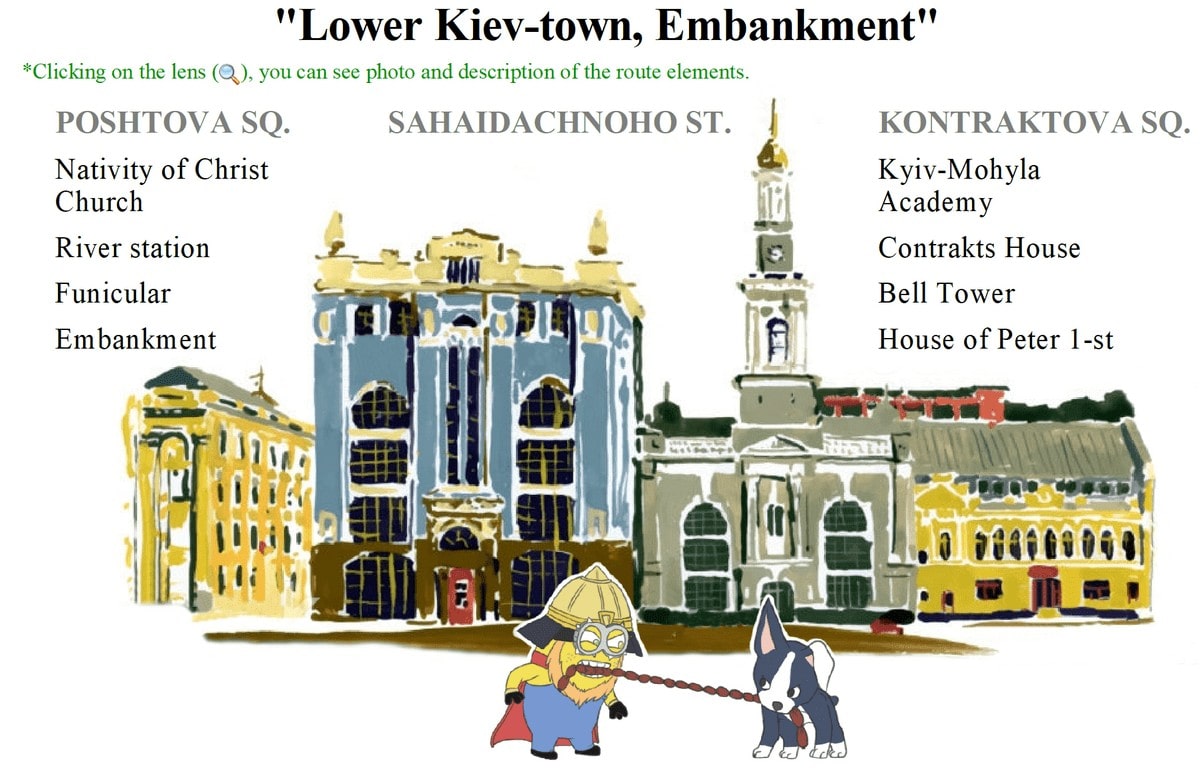
We aslo conduct tours around Podil – the oldest district of Kyiv and the most popular route among tourists. We will walk along the streets of the Lower Town, including Kontraktova and Poshtova Square, where you will see the Kyiv-Mohyla Academy; the Church of the Nativity of Christ; the Gostinnyi Dvir, built in the 19th century; the river station, and the embankment. You will learn about the development of the district, about its inhabitants, about the fire of 1811 and other interesting facts. In addition, we offer thematic tours: “Courtyards of Podil”, “Temples of Podil”, “Jewish Podil”. Duration – 2-3 hours.
Map of Podil

OTHER INTERESTING PLACES ON PODIL
Excursion around Podil is conducted by our guides around the old part of Kiev. In the times of Kyivan Rus princes and nobles settled in the Upper City, and in the Lower City (Podil) lived peasants and artisans. The oldest place is considered to be Vozdvyzhenska Street, on which in the VI century lived and did not grind potters, tars and kozhemyaki (tanners in English). Now on this street there are elite houses in Kyiv.
Fairs were held on the Kontraktova Square, and later the Magistrate was located here. The fire in 1811 destroyed almost all the wooden buildings. Among the stone buildings remained the Contracts House (1817), Hostynnyi Dvir (1809), Kyiv-Mohyla Academy (XVII century).
The Post Square historians consider one of the oldest squares of Ancient Kyiv, where berths were located and arranged a market. Subsequently, the Post Station (1669) and the river station (1897) were built here. To the present days, these objects have been preserved with some modifications. In warm days, from the Post embankment, motor ships cruise, where you can be offered an interesting excursion around Podil along the picturesque banks of the Dnipro.
Walking along the embankment, you will see the column of Magdeburg law and the Pedestrian bridge. On the other side is Trukhaniv Island, where you can eat and drink deliciously, enjoying a beautiful view of the Dnipro.
A lot of attention deserves churches of Podil. The most significant of them locates on our route. If you want, you can arrange a car inspection of all the main Podil churches.
Hetman Museum harmoniously fits into the excursions around Podil, where you will get acquainted with such personalities as Ivan Mazepa, Bogdan Khmelnytsky and others.

















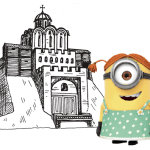





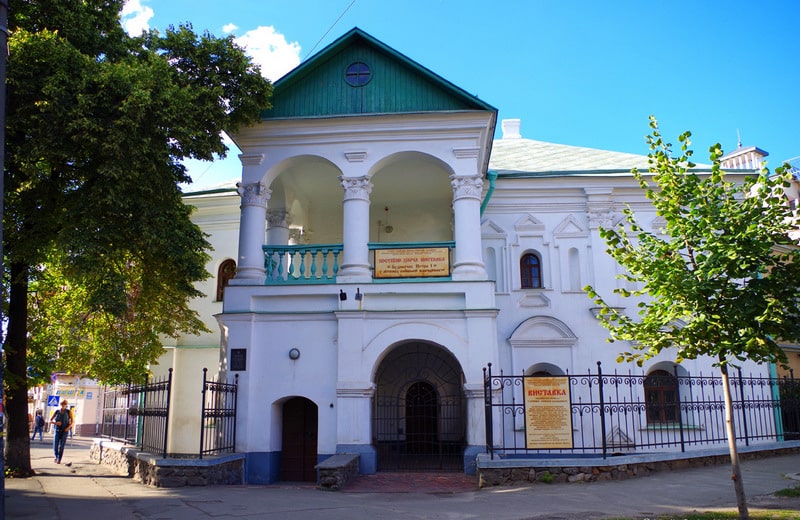

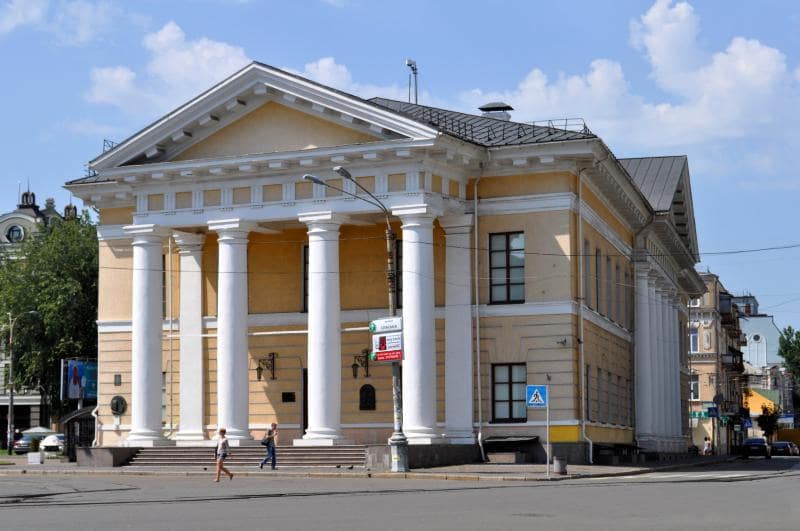
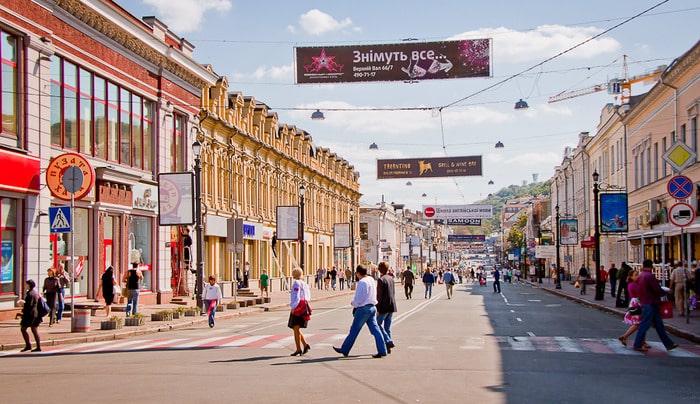
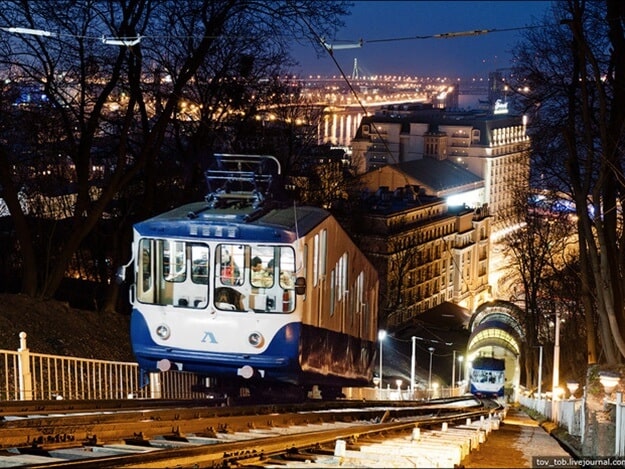 The funicular was created in 1902–1905. The cars could hold 70 passengers and, as now, they moved at a speed of 2 m/s. The route of the funicular was at that time almost forty meters shorter than the current one. The lower station was located on Borychiv Tok Str., although it was originally intended to be placed on Sahaidachnoho Str. However, the road was prevented by private houses, the owners of which could not solve the issue of resettlement for reasonable money and the lower station had to be moved. The tram line was specially laid from Kontraktova Square to it. In 1928, there was an accident during the repair. When replacing the rope, the top car fell down and collided with the lower car. There were no victims. Then during the reconstruction the lower station was moved to Sahaidachnoho Str.
The funicular was created in 1902–1905. The cars could hold 70 passengers and, as now, they moved at a speed of 2 m/s. The route of the funicular was at that time almost forty meters shorter than the current one. The lower station was located on Borychiv Tok Str., although it was originally intended to be placed on Sahaidachnoho Str. However, the road was prevented by private houses, the owners of which could not solve the issue of resettlement for reasonable money and the lower station had to be moved. The tram line was specially laid from Kontraktova Square to it. In 1928, there was an accident during the repair. When replacing the rope, the top car fell down and collided with the lower car. There were no victims. Then during the reconstruction the lower station was moved to Sahaidachnoho Str.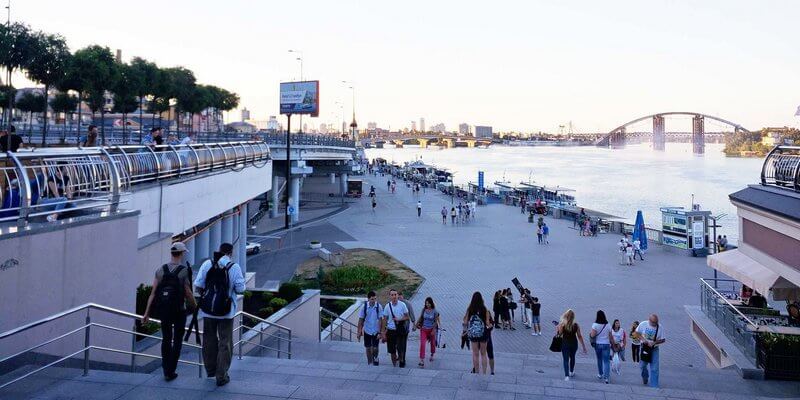
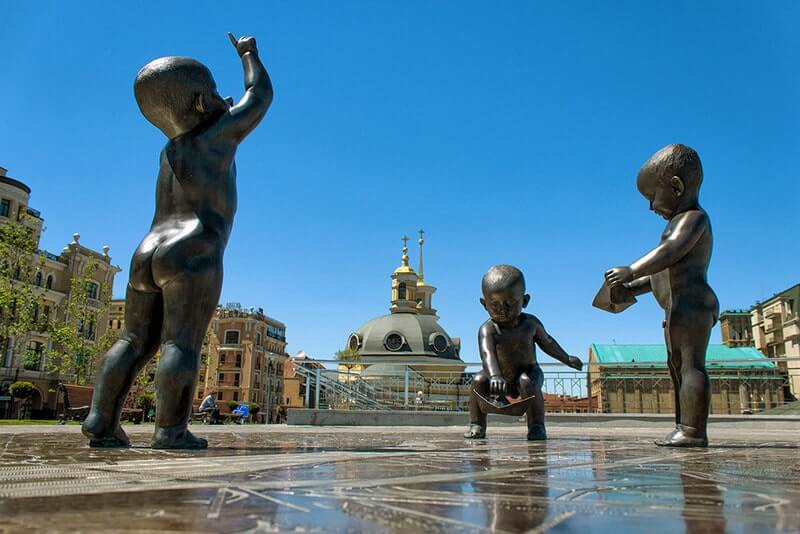 Poshtova Square is a link between the Upper Town, Pechersk and Podol. At this place there were the quays of ancient Kiev, whose place was later occupied by the River Station. The area of the square began to be occupied in the IVth century. It was called Khreshchatik (after the name of its origin) in the XVIIth – the first half of the XIXth century.
Poshtova Square is a link between the Upper Town, Pechersk and Podol. At this place there were the quays of ancient Kiev, whose place was later occupied by the River Station. The area of the square began to be occupied in the IVth century. It was called Khreshchatik (after the name of its origin) in the XVIIth – the first half of the XIXth century.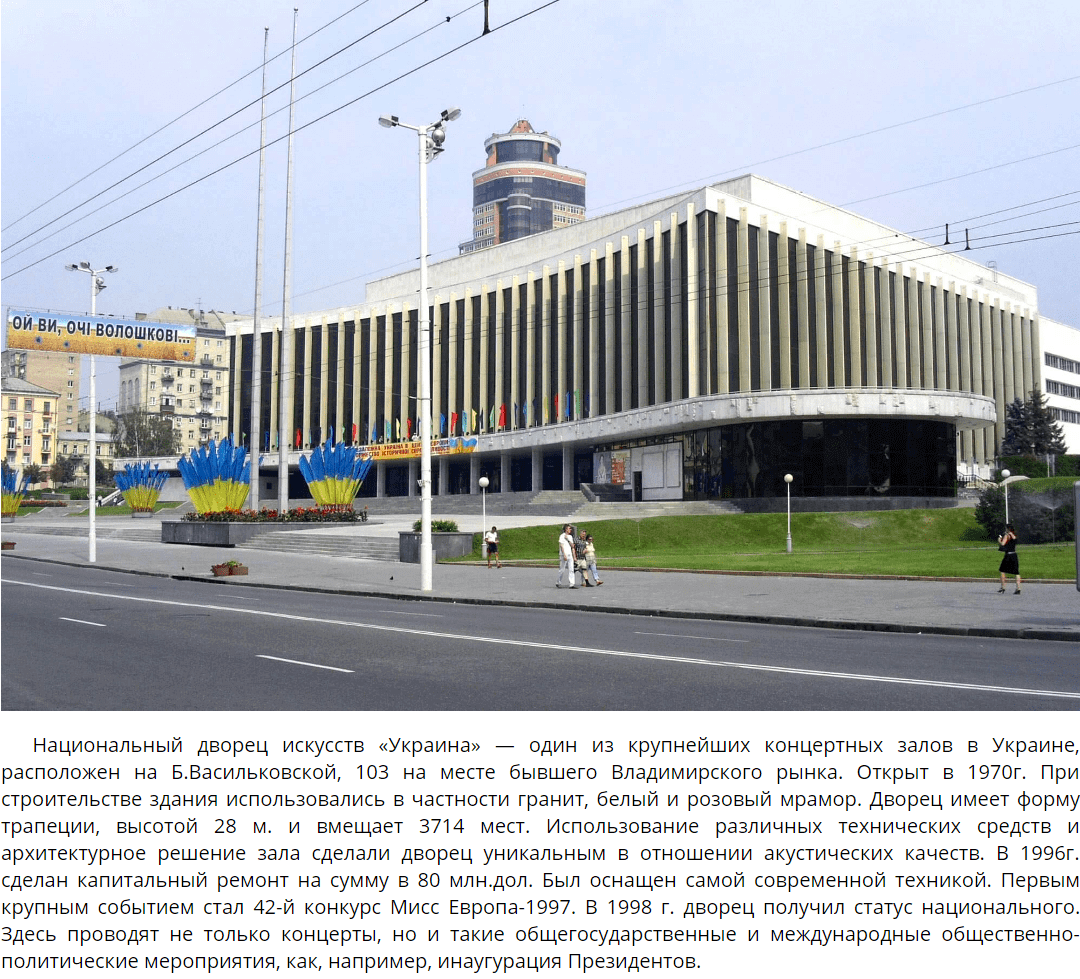
 Post Square and the embankment is a link between the Upper Town, Pechersk and Podol. At this place there were the quays of ancient Kiev, whose place was later occupied by the River Station. The area of the square began to be occupied in the IVth century. It was called Khreshchatik (after the name of its origin) in the XVIIth – the first half of the XIXth century.
Post Square and the embankment is a link between the Upper Town, Pechersk and Podol. At this place there were the quays of ancient Kiev, whose place was later occupied by the River Station. The area of the square began to be occupied in the IVth century. It was called Khreshchatik (after the name of its origin) in the XVIIth – the first half of the XIXth century. The pedestrian bridge was erected in 1957, it was called the Openwork bridge during the Soviet era. Even then, the authorities assumed that Trukhanov Island would become a favorite holiday destination for many Kievites, but there were those who were skeptical about this venture.
The pedestrian bridge was erected in 1957, it was called the Openwork bridge during the Soviet era. Even then, the authorities assumed that Trukhanov Island would become a favorite holiday destination for many Kievites, but there were those who were skeptical about this venture. Vozdvizhenskaya Str. is a picturesque corner of modern Kiev, which once was called the Gonchary-Kozhemyaki Tract. The history of Nikita Kozhemyaka the literary hero is connected with this street. According to the legend, he saved the inhabitants of Kiev from the snake.
Vozdvizhenskaya Str. is a picturesque corner of modern Kiev, which once was called the Gonchary-Kozhemyaki Tract. The history of Nikita Kozhemyaka the literary hero is connected with this street. According to the legend, he saved the inhabitants of Kiev from the snake. The river station is the main river port of the capital. Since ancient times Podil was the shopping center of Kiev. In the XIX century the ship began to walk actively on the Dnipro river and many piers stretched along Podol along the river. Only in the middle of the XIXth century a marina with a length of 1770 m was built here.
The river station is the main river port of the capital. Since ancient times Podil was the shopping center of Kiev. In the XIX century the ship began to walk actively on the Dnipro river and many piers stretched along Podol along the river. Only in the middle of the XIXth century a marina with a length of 1770 m was built here. Kontraktovaya Square is the central square of the Lower city, the main bargain of ancient Kiev was located on the site of it. Since the XIIIth century the market is represented on the site of the modern Kontraktovaya Square, but according to the decree of Paul the Russian Emperor in Kiev, annual contract fairs begin to take place at the end of the XVIIIth century, hence the name of the square. In 1494 Kiev got the right to have a city government, and then the area turns into an administrative center.
Kontraktovaya Square is the central square of the Lower city, the main bargain of ancient Kiev was located on the site of it. Since the XIIIth century the market is represented on the site of the modern Kontraktovaya Square, but according to the decree of Paul the Russian Emperor in Kiev, annual contract fairs begin to take place at the end of the XVIIIth century, hence the name of the square. In 1494 Kiev got the right to have a city government, and then the area turns into an administrative center.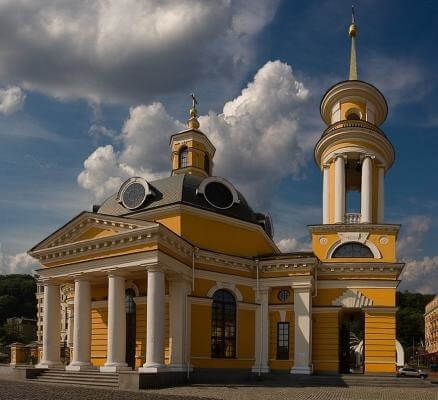 Nativity of Christ Church was built in 1809–1814. The coffin with the body of Taras Shevchenko the famous Ukrainian poet was represented here from May 6 to May 8, 1861 on the way to Kanev, the last resting place. Many people called the church Shevchenko. According to a recording in one of the church documents of the 18th century, the temple was built in 1011 under Vladimir the Grand Duke.
Nativity of Christ Church was built in 1809–1814. The coffin with the body of Taras Shevchenko the famous Ukrainian poet was represented here from May 6 to May 8, 1861 on the way to Kanev, the last resting place. Many people called the church Shevchenko. According to a recording in one of the church documents of the 18th century, the temple was built in 1011 under Vladimir the Grand Duke. Hetman Museum was opened in 1993 and deals with one of the most interesting landmarks in the history of Ukraine – the era of Hetman power. There are more than 6000 exhibits associated with the management of the hetmans. The permanent exhibition includes 4 rooms dedicated to Ivan Mazepa, Bogdan Khmelnitsky, Pilip Orlik and Pavel Skoropadsky.
Hetman Museum was opened in 1993 and deals with one of the most interesting landmarks in the history of Ukraine – the era of Hetman power. There are more than 6000 exhibits associated with the management of the hetmans. The permanent exhibition includes 4 rooms dedicated to Ivan Mazepa, Bogdan Khmelnitsky, Pilip Orlik and Pavel Skoropadsky. Kyiv-Mohyla Academy is the first higher educational institution in Ukraine, founded in the 17th century and became the first Orthodox higher education institution in Europe. Initially, in 1615, the Kyiv Brotherhood appeared and in 1631 the school of the Kiev-Pechersk Lavra, united with each other, formed the Kiev-Brotherhood College, which became the Kiev-Mohyla Academy in the end of the 1680s.
Kyiv-Mohyla Academy is the first higher educational institution in Ukraine, founded in the 17th century and became the first Orthodox higher education institution in Europe. Initially, in 1615, the Kyiv Brotherhood appeared and in 1631 the school of the Kiev-Pechersk Lavra, united with each other, formed the Kiev-Brotherhood College, which became the Kiev-Mohyla Academy in the end of the 1680s.